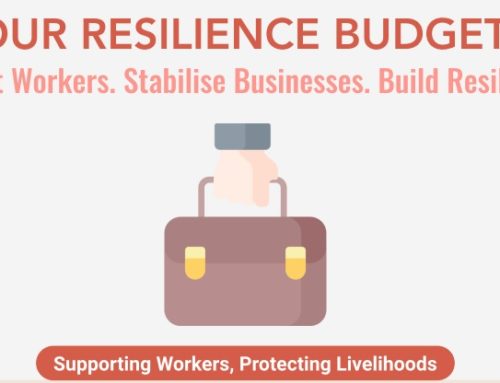Speak to anyone and most likely they will agree that medical costs will go up and will continue to rise through the years. But have you stopped to think why exactly that must be the case?
In a recent article published on TODAY, a doctor shared his personal views of why medical costs have been consistently rising and why it will likely continue going up. In a nutshell, he shares two main reason why medical costs have been increasing.
1. Increased awareness coupled with more advanced treatments
As societies like ours mature, governments start to place more emphasis on controlling healthcare costs through public awareness programmes and education. The age-old conviction holds true: Prevention is better than cure. If the government can get people to detect any potential serious disease earlier, costs of treatment can be better controlled. As such, people are getting more aware and they are going for more regular checks or at least visiting their doctors should they suspect anything rather than ignore it and hope it will go away. Take colon caner screening for example, in the older days, an examination for colon cancer costs less than S$200. But today, once colon cancer is diagnosed, there is a whole slew of additional tests that are done to determine the best course of action in treating the disease. These tests can easily go beyond a thousand dollars.
Furthermore, in the past when endoscopy was required, it was done without anesthesia or sedation, which makes the whole procedure most unbearable. However today, there are means to do it with the patient sedated so there is almost no discomfort at all. Wouldn’t you choose this method instead of the former? What is the trade-off? Increased costs naturally.
Previously, liver cancer patients who have reached a stage where removal of the affected parts of the liver is impossible, they are giving a few months to live. Today, with advanced drugs and treatments like oral chemotherapy pills and live-donor liver transplant, patients with similar conditions can expect to live longer than before. Again, this comes at a cost, a cost of easily a few hundred thousand dollars.
2. Rising medical overheads
Another factor to blame is the fact that medicine like any other business is directly affected by inflation and real estate demands. The cost of establishing a private clinic now compared to 10 or 20 years earlier has rising exponentially driven by real estate prices and rising cost of goods.
This is further exacerbated by the acute shortage of qualified healthcare workers like nurses, pharmacists, radiographers and therapists. These occupations are no longer the sexy jobs that the new generations aspire towards, at least not in our city, resulting in the need to increase salaries and remuneration to attract the needed workers. Mutual poaching of medical personnel are also common with clinics offering more attractive rewards to entice employees. Who eventually bears these increased costs? The consumer.
3. Temptations to abuse the national healthcare system
While it may not be as prevalent here as in the United States, the fact is that most citizens are covered by at least some basic healthcare insurance with our Medishield scheme. Naturally, there will be a temptation for doctors to charge more since they know that it will not be coming from the patients but from huge money-making corporations. Not saying that it is happening, but one cannot deny the fact that the temptation exists. If a poor patient comes in seeking treatment with no insurance, one can easily find the compassion to charge the bare minimum to help another human being. But if a doctor knows that the patient’s bill will be paid for by insurance, adding that additional $10 or even $1 becomes a lot easier.
So what can we do?
Does this mean nothing can be done? We may not be able to completely halt the rise of medical costs, but we can certainly do a lot to slow the growth.
First, we can revive the Fee Guidelines benchmark produced by the Singapore Medical Association to provide some transparency to the public and to discourage doctors and clinics from straying too far from the norm.
Second, insurers can help identify practices that consistently charge higher than others and to make such information public as well.
Thirdly, we can help cultivate the interests of the young who might be interested in working in this industry but discouraged due to the monetary rewards of other occupations. Solving the manpower shortage in healthcare will surely go some way in controlling costs.
Finally, insurers can play a bigger role to encourage healthy living by the clients through various reward schemes. Just like how car insurance gives a no-claim bonus to clients who have not made any claims over a number of years, health insurers can offer a similar system to motivate their clients to live healthier lifestyles and to be more diligent in taking care of themselves whether it be more regular medical checks or to exercise more frequently.
Reference article: http://www.todayonline.com/singapore/low-down-rising-medical-costs














Leave A Comment